The memories come tumbling back like so many falling dominoes picking up speed, quickly becoming blurred moments in motion until – splat! – they stop with an abrupt click in 1976 when The Poster was first spotted. A year later it was everywhere.
Bedrooms. College dorm rooms. Garages. You could find The Poster plastered anywhere and everywhere. And for good reason. The cascading blonde hair, impossibly white teeth and that perky, sun-kissed face framed by a red swimsuit, it all made The Poster nearly irresistible.
The allure of that red swimsuit? It was modest, revealing just enough to mesmerize.
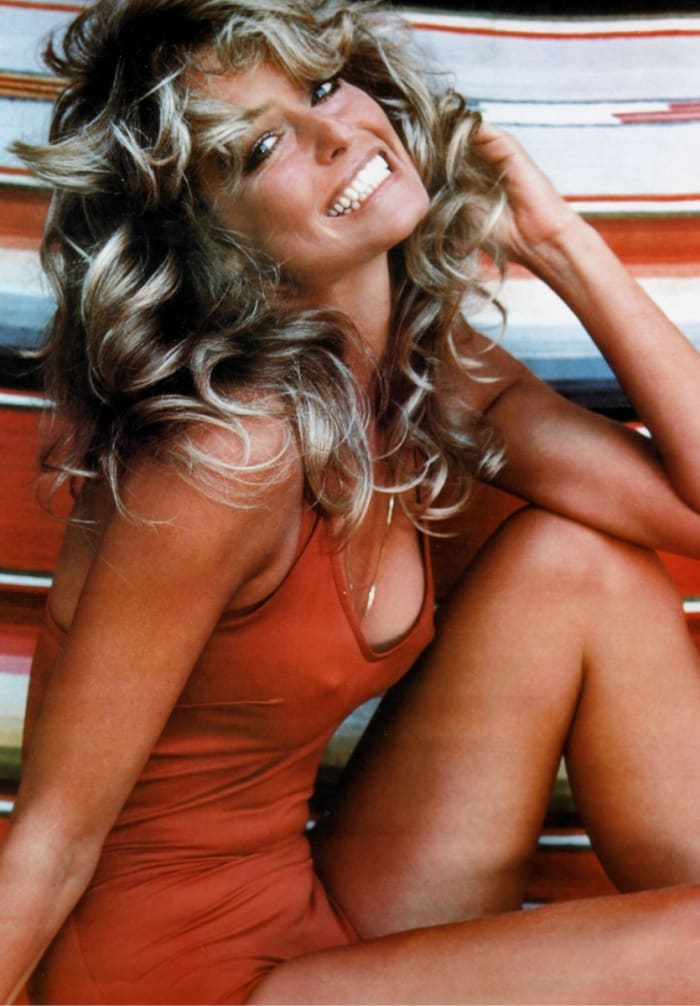
Farrah Fawcett’s poster had lifetime sales of 12 million, becoming the most popular pinup poster in history.
Courtesy Heritage Auctions
If you were there, you could never forget when Farrah Fawcett arrived. The best-selling pinup poster of all time cemented the deal. From that moment on, no one bothered with her full name. It was simply … Farrah. With her wholesome, girl-next-door sex appeal, she had reached the heights of one-name celebrity. There was no reason to call her anything else, but if you did bother to call Farrah Fawcett by her full name it was simply because you found joy in the alliteration.
All of this comes rushing back because a copy of The Poster, one that belonged to Farrah Fawcett herself, recently sold at auction for $1,000 at Heritage Auctions. For a Pop Culture phenomenon, I’d call that a bargain.
Farrah Fawcett’s poster remains a 28-by-20-inch snapshot of the ’70s, as firmly developed in the American psyche as bell-bottoms, disco and streaking, but far easier on the eyes.
At $3 a pop, The Poster sold six million copies its first year. All told, more than 12 million copies were sold worldwide. So profound was its impact, a copy of The Poster, along with Fawcett’s original red swimsuit, is in the Smithsonian National Museum of American History in Washington, D.C.
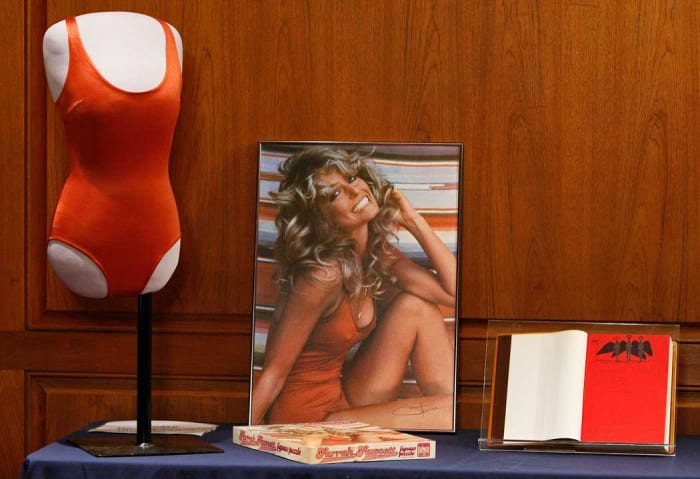
Farah Fawcett items, including the original a red swimsuit, poster and “Charlie’s Angels” script, were donated to the Smithsonian National Museum of American History in 2011.
Photo by Leigh Vogel/FilmMagic
The pinup has a long and revealing history. Its Glory Years came during World War II. Betty Grable’s 1943 back shot in a one-piece swimsuit and playful over-the-shoulder smile is the gold standard of which all other pinups are measured. Grable pinups were sanctioned by the military and found their way into cockpits, on the side of planes, and of course, all over American barracks.
She was so popular that, under interrogation, English speaking Germans during the war were forced to answer questions about American football and Betty Grable to prove they weren’t spies. The story goes that even General Omar Bradley, one of America’s towering military leaders of the first half of the 20th century, had to prove his identity by answering questions about Grable before being allowed to pass a security post.
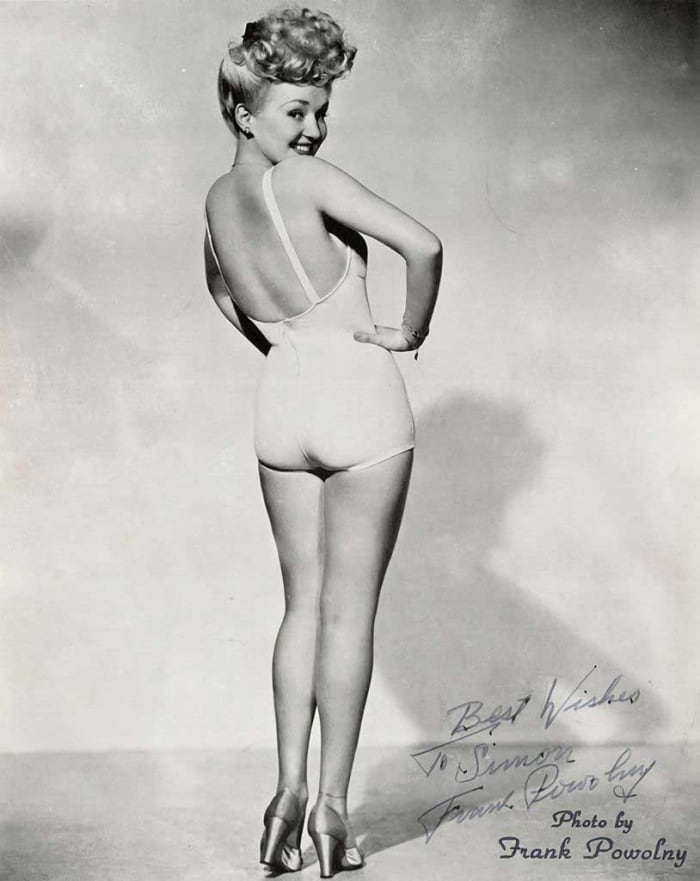
Betty Grable’s 1943 pinup was taken by Frank Powolny, whose career work included photographs of thousands of stars including Shirley Temple, Lana Turner, Gene Tierney, Humphrey Bogart, Bing Crosby, Jennifer Jones, Joan Collins and Ann-Margret.
Courtesy of Wikimedia Commons
For Farrah, a series of toothpaste, shampoo and car commercials in the early ’70s gained her notoriety. Her marriage to Lee Majors, star of TV’s “The Six Million Dollar Man” in 1973 thrust her even more into the public eye.
But it was her role in “Charlie’s Angels” that turned her into a star. The 1976 show, following the adventures of three women working at a private detective agency in Los Angeles, also starred Jaclyn Smith and Kate Jackson.
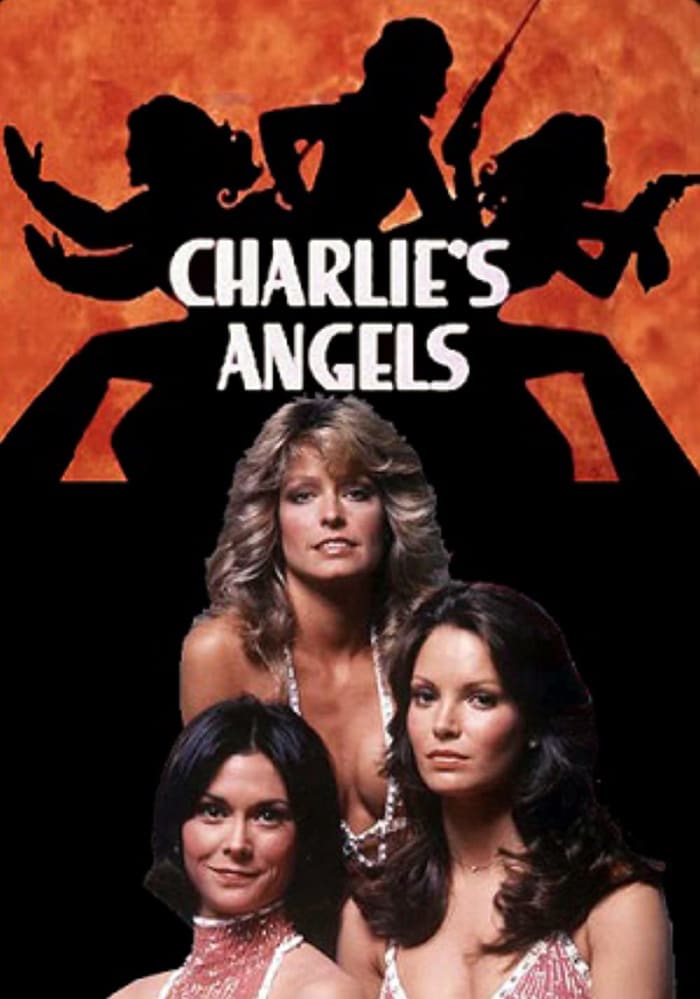
Farrah Fawcett, Kate Jackson and Jaclyn Smith starred in “Charlie’s Angels” as detectives working for a wealthy mystery man named Charlie who runs the detective agency via a speakerphone and his personal assistant, John Bosley.
In a stroke of luck, Pro Arts poster company approached Farrah to do The Poster before “Charlie’s Angels” debuted in September. In one of the great “what-if” moments in pop history, the famous red swimsuit wasn’t Pro Arts’ first choice for swimwear. The company wanted a bikini. But Farrah didn’t own one. So instead she went into her closet and put on what she had, photographer Bruce McBroom told Entertainment Weekly. The colorful background used as a backdrop during the photo shoot? It was a blanket from Mexico McBroom stashed in the back of his 1937 pickup. He thought it would go well with the swimsuit.
For the shoot, Farrah did her own makeup, squeezed lemon into her hair for highlights, slipped into her suit and flashed a killer smile. McBroom captured the magic. For the most part, that’s what it was, pure magic. And just as mystifying.
Farrah Fawcett left “Charlie’s Angels” after one season, becoming far more than a pinup girl. In a career that gained international fame, Farrah earned four Primetime Emmy Award nominations and six Golden Globe Award nominations. She was 62 when she died of cancer on June 25, 2009. Her Farrah Fawcett Foundation supports cancer research.
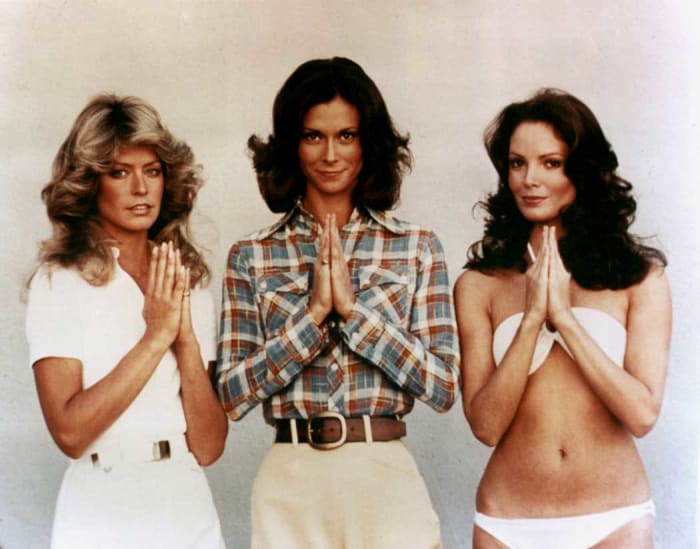
Farrah Fawcett, Kate Jackson and Jaclyn Smith made “Charlie’s Angels” a heavenly hit.
FilmPublicityArchive/United Archives via Getty Images
If you don’t remember when Farrah died, you’re not alone. In a strange twist of fate, her passing was largely overshadowed hours later by the shocking, drug-induced death of Michael Jackson. Media attention shifted swiftly from Farrah to Jackson and never looked back.
But we do, thanks in part to the incredible staying power of The Poster, a red-swimsuit moment framed in time.
“I have tried over the years to understand why the Farrah poster attracted so much interest from so many people,” McBroom said in an interview. “I think it was a lucky combination of this wholesome, beautiful, all-American girl looking directly at you with a dazzling smile and a red suit that covered a lot but revealed a little.”
You May Also Like:
The Complicated History of Mr. Potato Head








